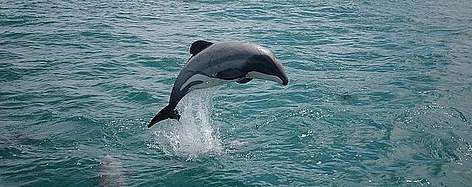DAY 3: Taking Action
Activity 1: Predator Free 2050 – A Call to Arms [4 points]
There is currently a huge drive to get rid of all predators from New Zealand. Predators are animals that, in some way, damage our natural environment. Many organisations are working hard to accomplish this goal.
Click on the links below to watch videos about three of the current projects operating to make New Zealand ‘Predator Free by 2050.’
Predator Free Video #1: Cacophony Project
Predator Free Video #2: Taranaki Mounga Project
Predator Free Video #3: Zero Invasive Predators (ZIP)
On your blog, tell us which one of the videos you liked the best and why..
I like video three the best, because I like seeing that they are trying to catch the pests. The less pests there are, the more native birds and animals there are. I like seeing people work together to change something that is impacting on our environment.
Activity 2: Protecting the Most Vulnerable - Fact or Fiction? [4 points]
Here in New Zealand we have a native dolphin, the Māui Dolphin, that is on the verge of extinction (disappearing forever). As of this year, there are only 63 Māui dolphins left and people predict that they will be extinct by 2033. Environmentalists and activists, including the World Wildlife Fund (WWF), are working hard to save the dolphin because it is such a special and unique animal. To learn more about the Māui Dolphin, please follow this link. If you would like to sign a petition from the WWF encouraging the New Zealand government to take action to save the Maui Dolphin, please follow this link.
Once you have learned more about this unique dolphin, it is time for you to share your learning with us. 
On your blog, post three facts that you learned about the Māui Dolphin. Then, using your imagination, create three more statements about Māui dolphins that are not true (i.e. false). Please don’t tell us which of your statements about Māui Dolphins are true and which are false. It will be the job of the students and staff who read your blog to figure it out.
1. Māui dolphin are the smallest of the world’s 32 dolphin species.
2. They live up to 27 years!
3. They produce just one calf every 5 - 6 years.
4. Females have there first calf (baby) between 10-12 years of age.
5. Māui dolphin have distinctive grey, white and black markings and a short snout.
6. Māui and Hector's dolphins look different to other dolphins. They are the only New Zealand dolphins with a rounded black dorsal fin. Other dolphins usually have a sickle-shaped fin.
Activity 3: The Power of Ten [10 points]
Sir David Attenborough is a famous TV presenter from England who loves nature and the natural world. He has spent his career filming documentaries about the planet and working hard to protect it. In a recent interview, Sir David was asked to reflect on all that he had learned and to imagine that he had suddenly been given the power to save 10 animals and/or plants from extinction (disappearing forever).
3. Solenodon
Let’s imagine that you had the same power and that you could save 10 species (animals or plants) from extinction. Who would you save? If I had the choice I would probably save animals like the elephant, white tiger and rhinoceros because they are unique and have lived for centuries on earth. I would also like to save some of my favourite flowers including hydrangeas and calla lily flowers. What about you?
Left to right: White tiger, Hydrangeas, Calla Lily
On your blog, list 10 species (animals or plants) that you would protect from extinction. For each one, give a reason as to why you think it is important to protect.
1. Lilies
2. Elephants
3. Koala
4. Tulips
5. Polar Bears
6. Dogs
7. Roses
8. Cats
9. Bunnies
10. Monkey
I don't know why I would save these animals, it is just animals that I love and don't want them to be extinct.
No comments:
Post a Comment
Thank you for your positive, thoughtful, helpful comment.